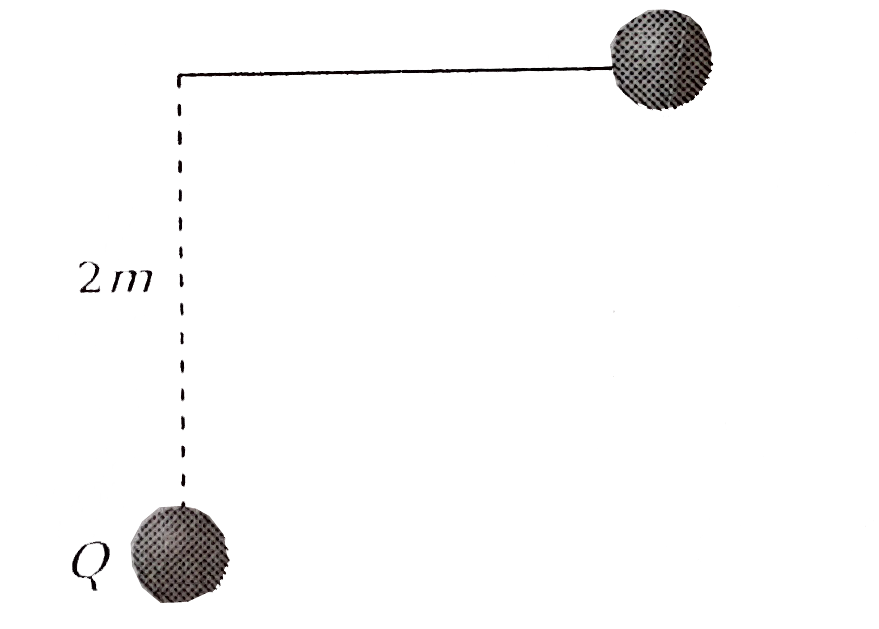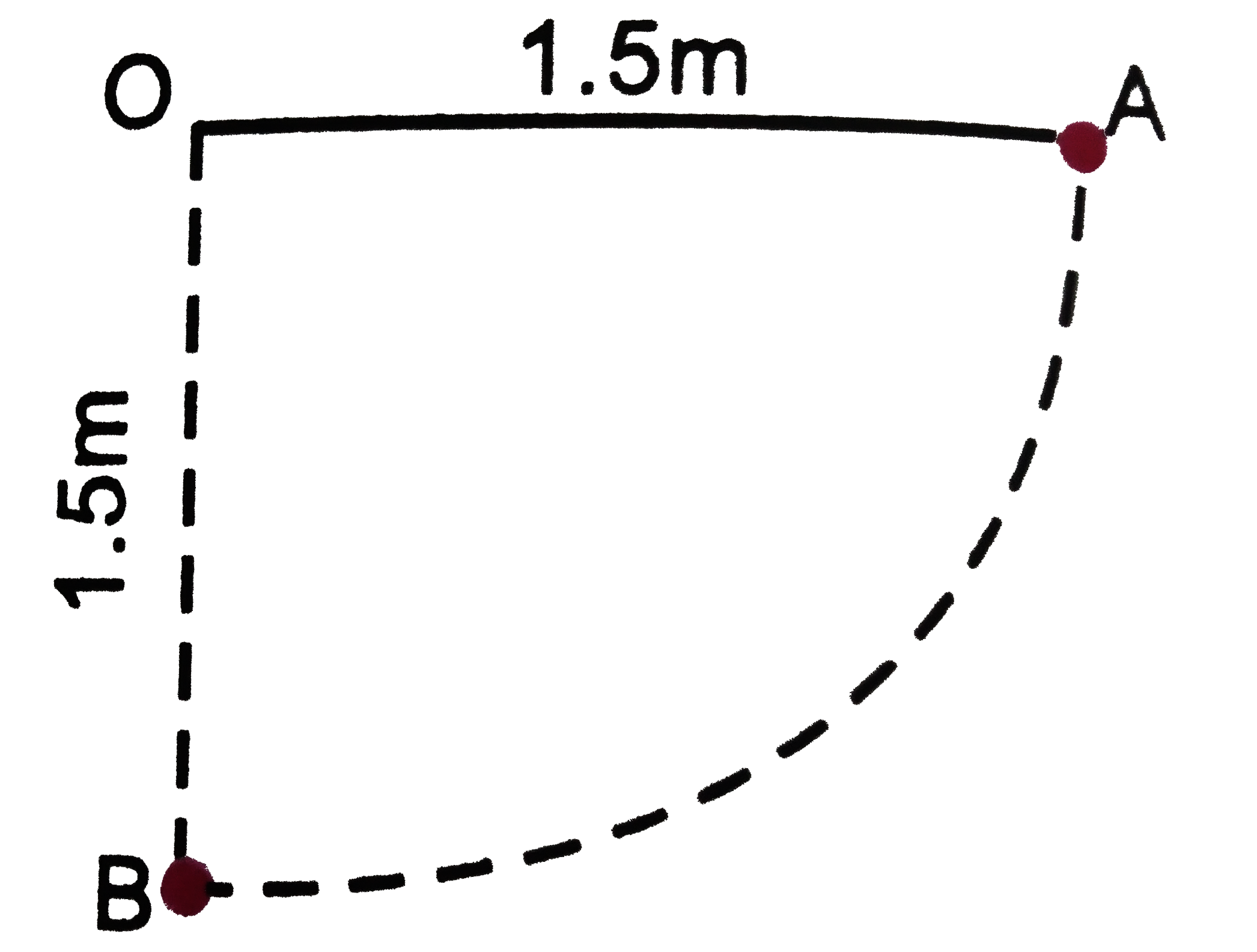A pendulum of length 2 m lift at P . When it reaches Q , it losses 10% of its total energy due to air resistance. The velocity at Q is

6ms−1
1ms−1
2ms−1
8ms−1
The correct Answer is:C
(c ) Gain in KE =Loss in PE
⇒ 12mv2=(0.1)(mgh)
∴ v=√0.2gh=√0.2×10×2=2ms−1
Topper's Solved these Questions
- BOOK - DC PANDEYCHAPTER - WORK, ENERGY AND POWEREXERCISE - CHECK POINT 6.310videos
WORK, ENERGY AND POWER
- BOOK - DC PANDEYCHAPTER - WORK, ENERGY AND POWEREXERCISE - EXERCISES(TAKING IT TOGETHER)83videos
WORK, ENERGY AND POWER
- BOOK - DC PANDEYCHAPTER - WORK, ENERGY AND POWEREXERCISE - CHECK POINT 6.120videos
WORK, ENERGY AND POWER
- BOOK - DC PANDEYCHAPTER - WORK, ENERGY & POWEREXERCISE - Level 2 Comprehension Based2videos
WORK, ENERGY & POWER
- BOOK - DC PANDEYCHAPTER - WORK, POWER AND ENERGYEXERCISE - E Integer Type Questions11videos
WORK, POWER AND ENERGY
Similar Questions
The string of a pendulum is 2.0m long. The bob is pulled sideways so that the string becomes horizontal and then the bob is released. What is the speed with which the bob arrives at the lowest point ? Assume theat 10% of initial energy is dissipated against air resistance. Take g=10m/s2
View SolutionThe bob A of a simple pendulum is released from a horizontal position A as shownin in figure. If the length of the pendulum is 1.5m , what is the speed with which the bob arrives at the lowermost point B, given that it dissipates 5% of its initial energy against air resistance ?
 View Solution
View Solution
Knowledge Check
- Question 1 - Select One
The bob of a pendulum is released from a horizontal position. If the length of pendulum is 2 m, what is the speed with which the bob arrives at the lower most point. Assume that 10% of its energy is dissipated against air resistance.
(Take g=10ms−2)A8ms−1B4.5ms−1C5ms−1D6ms−1 - Question 2 - Select One
The bob of a pendulum is released from a horizontal position. If the length of pendulum is 2 m, what is the speed with which the bob arrives at the lower most point. Assume that 10% of its energy is dissipated against air resistance.
(Take g=10ms−2)A4ms−1B6ms−1C8ms−1D10ms−1 - Question 3 - Select One
An ice block is projected vertically up with a velocity 20 ms−1. The amount of ice that melt when it reaches the ground and if the loss of P.E. is converted into heat energy if the mass of ice block is 4.2 kg
A2.5gmB2.5kgC0.25kgD0.25gm
A particle slides with a speed of 3ms−1 at P. When it reaches Q,it acquires a speed of 4ms−1 after describing an angle of 60∘ at O as shown in figure .Find the changes in the velocity of the particle between P and Q. Assume that the path followed by the particle is circular from P to Q
 View Solution
View SolutionA simple pendulum of length 1 m, and energy 0.2 J, oscillates with an amplitude 4 cm. When its length is doubled then the energy of oscillation will be
View SolutionA ball is falling freely from a certain height. When it reached 10m height from the ground its velocity is v0. It collides with the horizontal ground and loses 50% of its energy and rises back to height of 10m. The value of velocity v0 is
View SolutionA simple pendulum of length 'L' has mass 'M' and it oscillates freely with amplitude energy is
(g = acceleration due to gravity)View SolutionA 2.0-kg projectile is fired with initial velocity components vox=30m/s and voy=40m/s from a point on the earth's surface. Neglect any effects due to air resistance.
What is the kinetic energy of the projectile when it reaches the highest point in its trajectory ?View Solution

